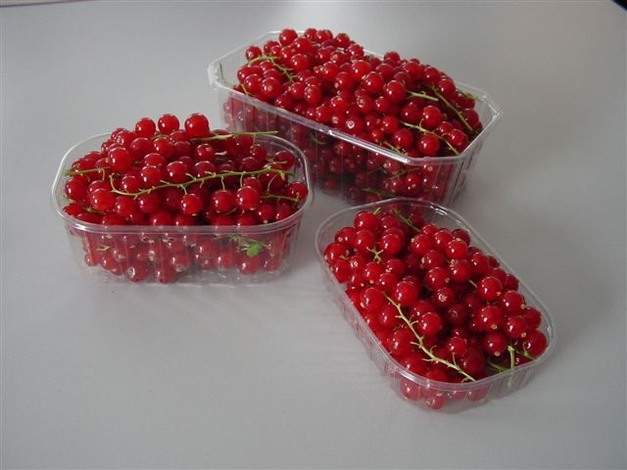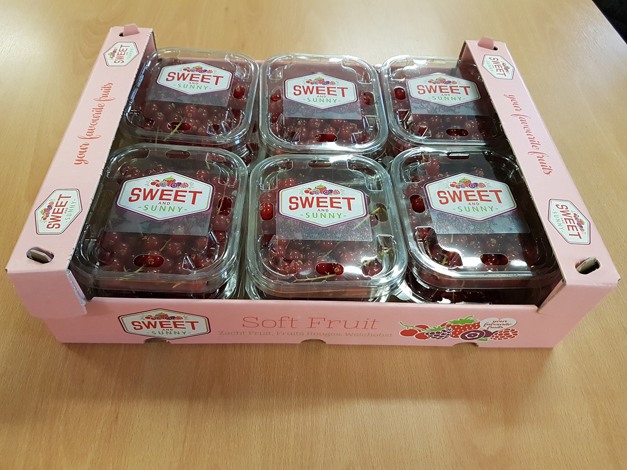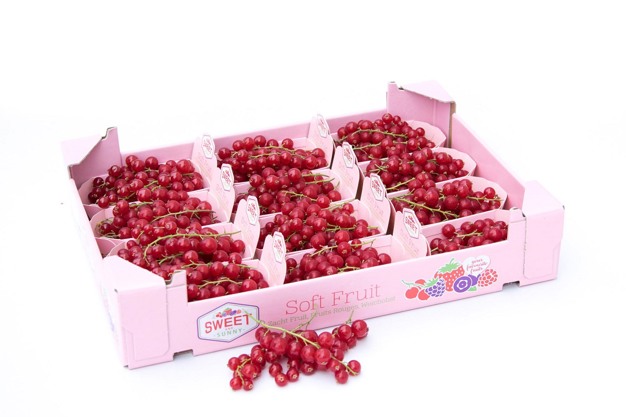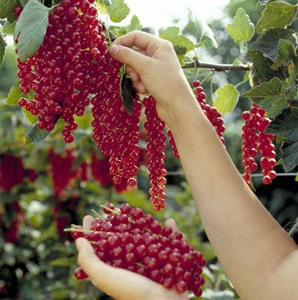"Redcurrant sales have been good since the summer and prices are higher than we've seen in recent years," began Marcel van Lith, senior sales agent at The Greenery, in late November. He says there are two contributing factors. "Demand has been broader and the supply slightly smaller."
 The Greenery's redcurrant sales are going smoothly.
The Greenery's redcurrant sales are going smoothly.
"Most growers harvested fewer kilos of the latest crop, so fewer redcurrants went into storage," says Marcel. The pandemic measures also had an unexpected side effect. "Everyone was forced to find sales towards retailers or other channels other than the hospitality sector. That resulted in wider spread, which is good for sales."
Rising demand
The season depends on the redcurrants' storability. "There were minimal rejects at the start of that season, but you don't know how well the product will store until December. Prices can never make up for a too-high failure rate," Marcel explains. He sees redcurrant demand rising in line with that of other soft fruit. "That's primarily in blueberries and raspberries."
 In the summer, most Dutch redcurrants are sold locally.
In the summer, most Dutch redcurrants are sold locally.
"But the demand for redcurrants and blackberries is growing along that, albeit to a lesser extent." The sales agent, thus, also expects slight acreage growth and notes that growers are upscaling. "That has continued rapidly. Before, much redcurrant cultivation was done on a side business or a small scale. Much of that has stopped, replaced by specialization and scale increases," Marcel continues.
Labor costs, a weighty issue
Redcurrants, thus, have generally good prospects in the Netherlands. Still, not all that glitter is gold, van Lith says. "Sales are booming, but it's not all profit; costs have increased substantially." Although those have all risen, he considers labor a particularly challenging cost for the labor-intensive redcurrant crop. "Labor costs are a weighty issue for soft fruit," Marcel continues. That affects the Dutch product's competitive position, especially in the summer and when there is a larger European harvest.
"That weakens the Netherlands’ competitive edge. When more redcurrants are available, the Netherlands has to gain ground, and then the high costs have a greater impact." Marcel adds that in the summer, most Dutch redcurrants are sold locally. "During the storage period, starting in October, the demand from export destinations starts to increase. We send Dutch redcurrants almost all over Europe, but France, Germany, Austria, Switzerland, and Italy are our main export markets," he says.
Harvest security
Along with increasingly volatile weather conditions, the seller sees rising costs as an added crop risk. "Those high costs mean growers cannot afford a failed crop. It simply costs too much. Also, if a crop fails, you cannot meet customer agreements, which leads to even higher costs. Growers must do everything they can to ensure harvest security."

Demand from the export destinations rises during the storage season.
How crop protection products are interpreted presents yet another challenge, Marcel continues. "The German market, for example, wants redcurrants with fewer than five agents' residues. Marketing crop protection agents cost plenty of time and money, and producers make a cost-benefit trade-off. So, there’s a limited number of agents for small crops. Plus, more and more agents work very specifically, so by not alternating those substances, you make your crop susceptible to resistance."
“But that alternation is hard when you're allowed to use only, at most, five active agents of the few that are available. That makes meeting client requirements challenging. Buyers want a perfect product on the one hand, but growing a good product is already quite tough. But growers must consider crop protection. That's considerably challenging for redcurrants."
Dutch grower leader in redcurrant storage
The Dutch company has an advantage over its southern European counterparts regarding climate conditions as well as the ULO storage of redcurrants." The Netherlands began testing that some 25 years ago, so both growers and suppliers have acquired plenty of knowledge. That's somewhat lacking overseas."
 According to The Greenery, redcurrant cultivation faces challenges around labor costs and the crop protection package.
According to The Greenery, redcurrant cultivation faces challenges around labor costs and the crop protection package.
Marcel thinks that has to do with the crop needing cold winters, as experienced in the Netherlands. "The Dutch climate is well suited to redcurrant cultivation. Although the winters are also warming up, it's still cold enough for this product. It's far harder to grow certain varieties in southern countries. You can, for example, only grow the storage variety Rovada on a small scale in the Italian mountains. Not in France or Spain, where it's warmer. You can't cultivate redcurrants just anywhere," he says.
That is not to say recurrent storage is problem-free. "They aren't all suited to refrigeration." Marcel compares it to top ice skaters who will not set a world record without sharp skates, good condition, and the best technique. "It's the same with redcurrants; long-term storage requires genuine know-how. During cultivation, the growers already account for that by pruning, using crop protection, and picking. For long-term storage, you must harvest redcurrants at the perfect time. Everything must be right so they're good quality until the end," he explains.
Marcel van Lith The Greenery
The Greenery
Tel: +31 (0)180 656 974
m.vanlith@thegreenery.com
www.thegreenery.com
